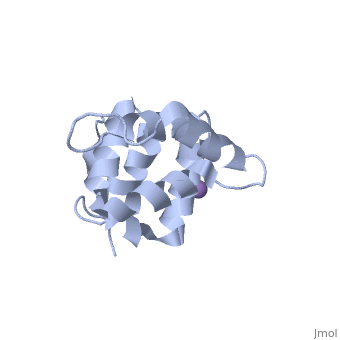Interleukin-1 receptor-associated kinase
FunctionInterleukin-1 receptor-associated kinase (IRAK) is a kinase involved in signaling innate immune responses from Toll-like receptors and interleukin-1 receptor-related proteins[1]. RelevanceIRAK4 is involved in early recognition of pathogens and the initiation of inflammation when fighting infection. DiseaseIRAK4 deficiency is a disorder which causes recurrent bacterial infections. |
| ||||||||||
3D structures of interleukin-1 receptor-associated kinase3D structures of interleukin-1 receptor-associated kinase
Updated on 25-August-2020 {{#tree:id=OrganizedByTopic|openlevels=0|
- IRAK1
- 6bfn – hIRAK1 residues 194-530 - human
- 6bfn – hIRAK1 residues 194-530 - human
- IRAK2
- 3mop – hIRAK2 DEATH domain + hIRAK4 DEATH domain + MYD88
- 3mop – hIRAK2 DEATH domain + hIRAK4 DEATH domain + MYD88
- IRAK3 DEATH domain residues 4-106
- IRAK4 kinase domain residues 30-336; DEATH domain residues 4-106
- 2nru, 2nry, 2oib, 2o8y, 4rmz – hIRAK4 kinase domain - human
- 4u97, 4u9a - hIRAK4 kinase domain (mutant)
- 2oic, 4xs2 - hIRAK4 kinase domain + staurosporine
- 4y73, 4yo6, 4yp8, 4ztl, 4ztm, 4ztn, 5kx7, 5kx8, 5t1s, 5t1t, 5uiq, 5uir, 5uis, 5uit, 5uiu, 6f3d, 6f3e, 6f3g, 6f3i, 6n8g, 6o8u, 6o94, 6o95, 6o9d, 6uya, 6vql - hIRAK4 kinase domain + inhibitor
- 5w84, 5w85, 5k72, 5k75, 5k76, 5k7g, 5k7i, 6ega, 6eg9, 6egd, 6ege, 6egf, 6mom, 6rfi, [[6rfj] - hIRAK4 residues 154-460 + inhibitor
- 2oid - hIRAK4 kinase domain + AMPPNP
- 3mop - hIRAK4 DEATH domain + hIRAK2 DEATH domain + MYD88
- 1wh4 – mIRAK4 DEATH domain – mouse – NMR
- 2a9i - mIRAK4 DEATH domain
- 2nru, 2nry, 2oib, 2o8y, 4rmz – hIRAK4 kinase domain - human
}}
